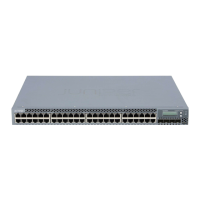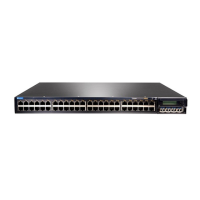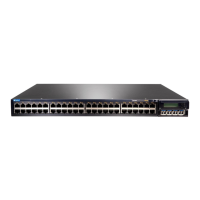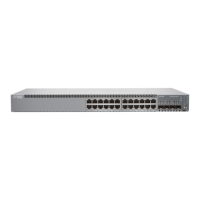Configuring Accounting for the Logical Interface
Juniper Networks routers or switches can collect various kinds of data about traffic passing
through the router or switch . You can set up one or more accounting profiles that specify
some common characteristics of this data, including the following:
•
The fields used in the accounting records
•
The number of files that the router or switch retains before discarding, and the number
of bytes per file
•
The period that the system uses to record the data
You configure the profiles and define a unique name for each profile using statements
at the [edit accounting-options] hierarchy level. There are two types of accounting profiles:
interface profiles and filter profiles. You configure interface profiles by including the
interface-profile statement at the [edit accounting-options] hierarchy level. You configure
filter profiles by including the filter-profile statement at the [edit accounting-options]
hierarchy level. For more information, see the Network Management Administration Guide
for Routing Devices.
You apply filter profiles by including the accounting-profile statement at the [edit firewall
filter filter-name] and [edit firewall family family filter filter-name] hierarchy levels. For
more information, see the Routing Policy Feature Guide for Routing Devices.
Applying an Accounting Profile to the Logical Interface
To enable accounting on a logical interface, include the accounting-profile statement:
accounting-profile name;
You can include this statement at the following hierarchy level:
•
[edit interfaces interface-name unit logical-unit-number]
You can also reference profiles for the physical interface; for more information, see
“Configuring Accounting for the Physical Interface” on page 74.
Example: Applying an Accounting Profile to the Logical Interface
Configure an accounting profile for an interface and apply it to a logical interface:
[edit]
accounting-options {
file if_stats {
size 4m files 10 transfer-interval 15;
archive-sites {
"ftp://login:password@host/path";
}
}
interface-profile if_profile {
interval 15;
file if_stats {
fields {
Copyright © 2015, Juniper Networks, Inc.76
Network Interfaces for EX4300 Switches
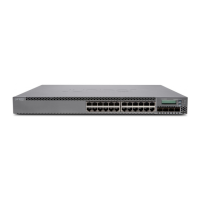
